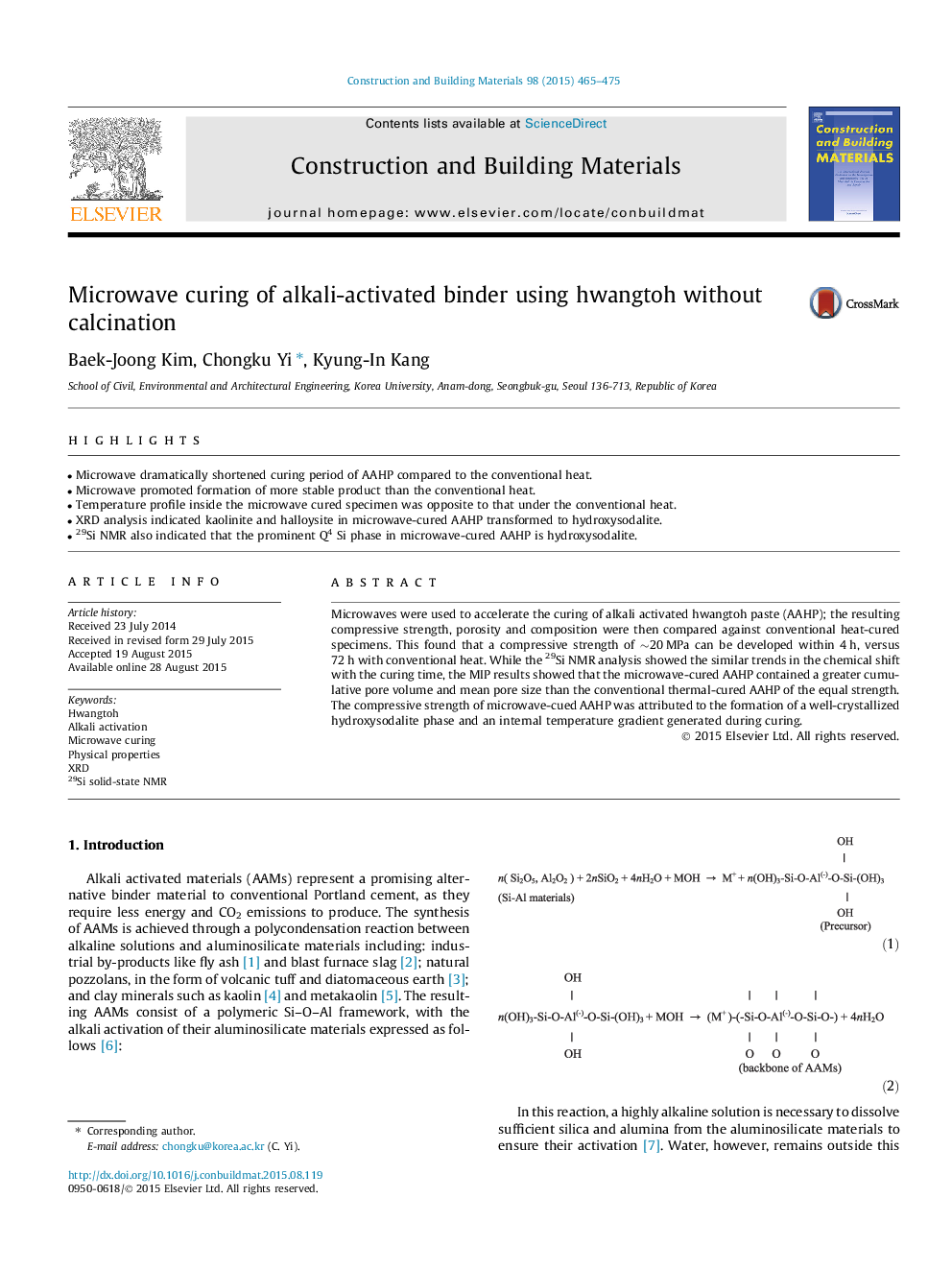| Article ID | Journal | Published Year | Pages | File Type |
|---|---|---|---|---|
| 256619 | Construction and Building Materials | 2015 | 11 Pages |
•Microwave dramatically shortened curing period of AAHP compared to the conventional heat.•Microwave promoted formation of more stable product than the conventional heat.•Temperature profile inside the microwave cured specimen was opposite to that under the conventional heat.•XRD analysis indicated kaolinite and halloysite in microwave-cured AAHP transformed to hydroxysodalite.•29Si NMR also indicated that the prominent Q4 Si phase in microwave-cured AAHP is hydroxysodalite.
Microwaves were used to accelerate the curing of alkali activated hwangtoh paste (AAHP); the resulting compressive strength, porosity and composition were then compared against conventional heat-cured specimens. This found that a compressive strength of ∼20 MPa can be developed within 4 h, versus 72 h with conventional heat. While the 29Si NMR analysis showed the similar trends in the chemical shift with the curing time, the MIP results showed that the microwave-cured AAHP contained a greater cumulative pore volume and mean pore size than the conventional thermal-cured AAHP of the equal strength. The compressive strength of microwave-cued AAHP was attributed to the formation of a well-crystallized hydroxysodalite phase and an internal temperature gradient generated during curing.
